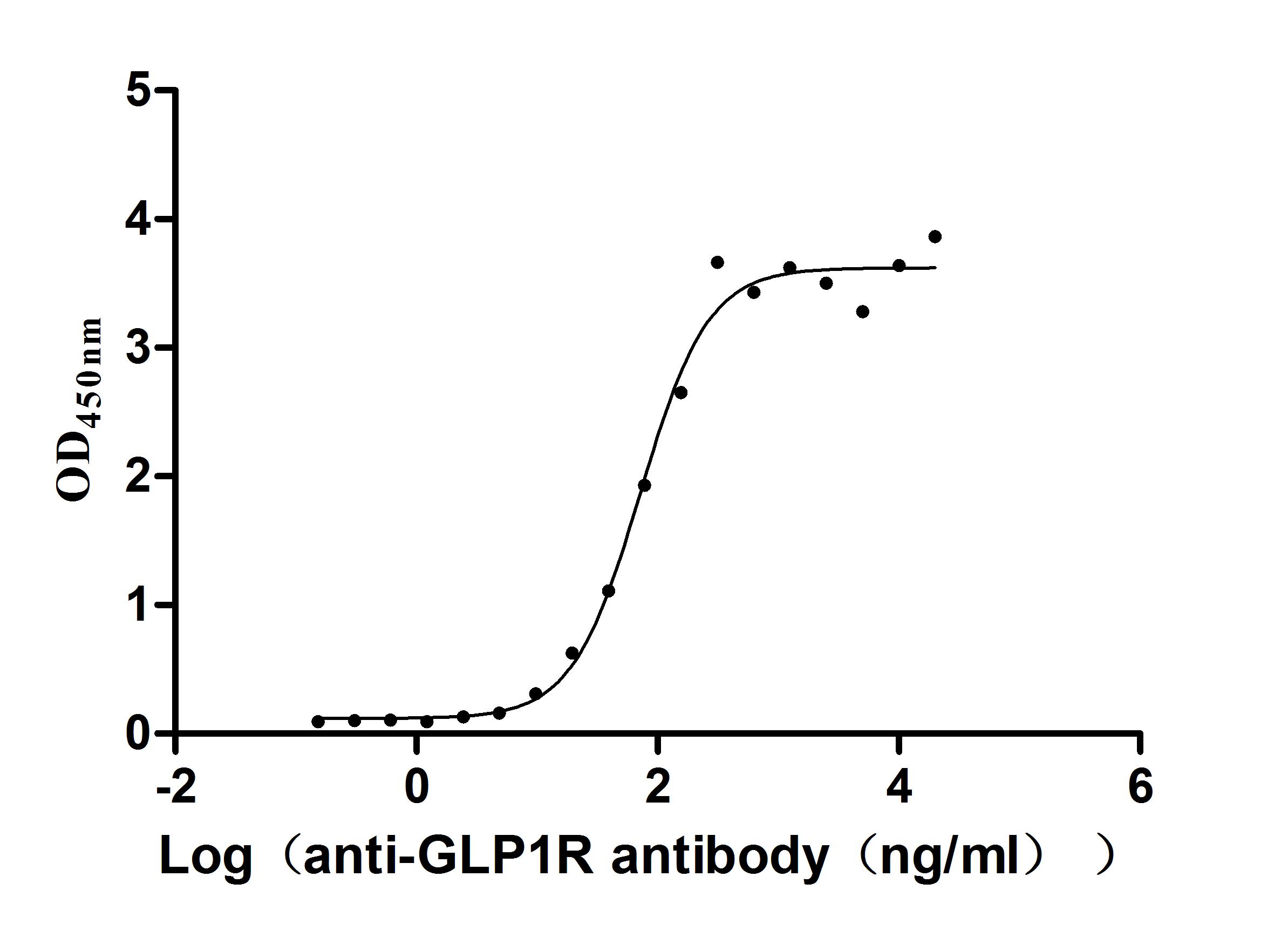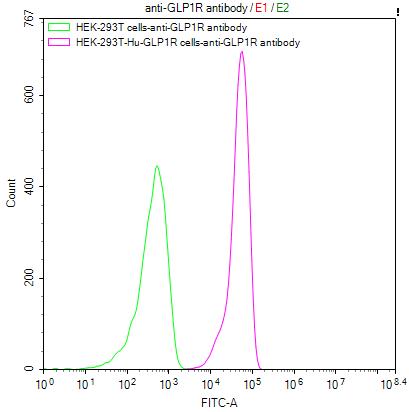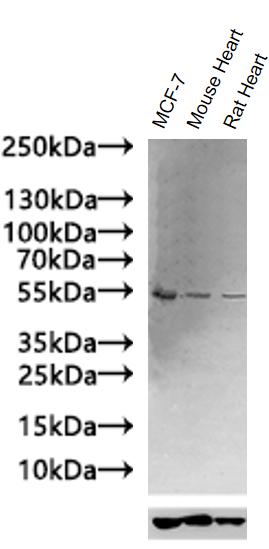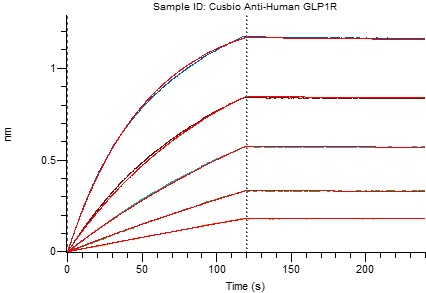The GLP1R recombinant monoclonal antibody was produced by CUSABIO using the following steps: First, B cells were separated from the spleen of the immunized animal. The immunization process involved using recombinant human GLP1R protein as the immunogen. Next, RNA was isolated from the B cells, followed by reverse transcription to synthesize cDNA. Using the cDNA as a template, the gene encoding the GLP1R antibody was extended using a degenerate primer. The GLP1R antibody was inserted into a vector. The recombinant vector was introduced into host cells through transfection, allowing the host cells to express the GLP1R recombinant monoclonal antibody. The GLP1R recombinant monoclonal antibodies were harvested from the cell culture supernatant and subsequently purified using affinity chromatography. Finally, these purified antibodies have been demonstrated to recognize the human GLP1R protein in ELISA.









